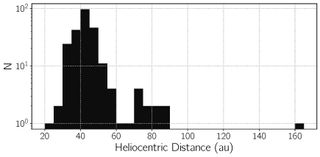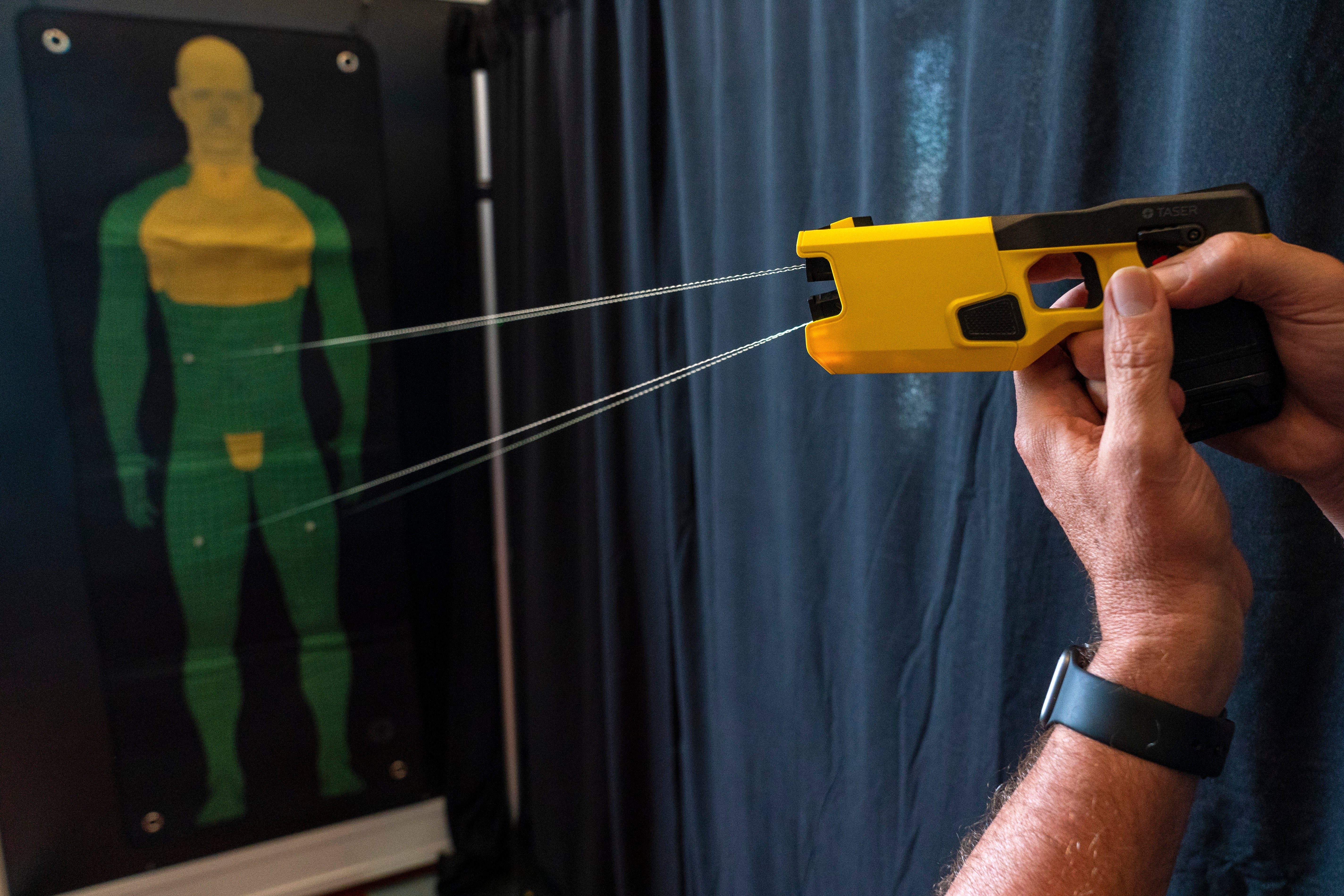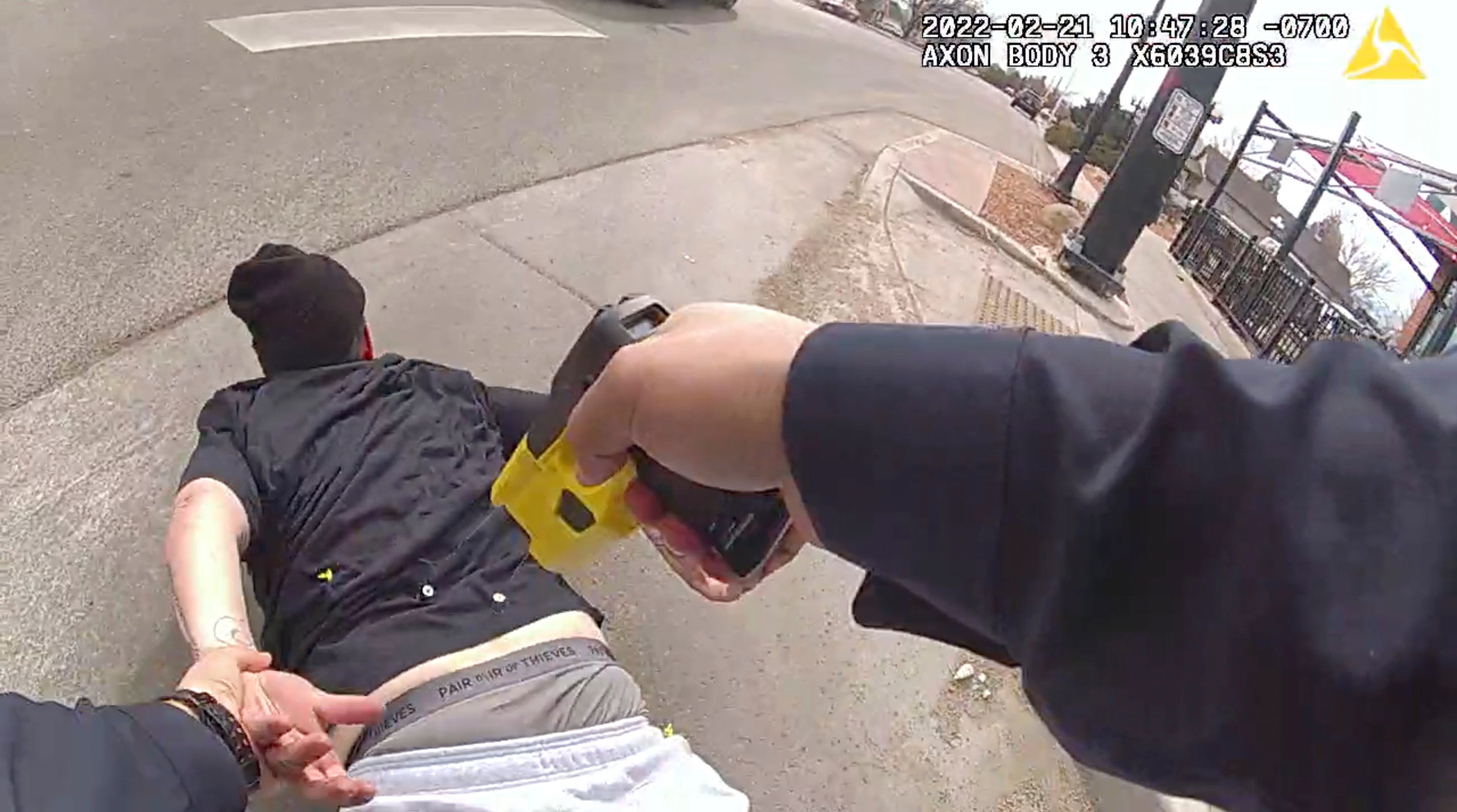'The women we honor today made it possible for earthlings to lift beyond the bounds of Earth.'

Although they may never completely shed the label, the women who worked for NASA as human computers during the space race are no longer "hidden figures," and they now have a medal to prove it.
On Wednesday (Sept. 18), the women as a group and four individuals who have come to represent their collective experiences were awarded the Congressional Gold Medal, one of the highest civilian honors in the United States. As authorized by Congress, the medals were bestowed to Christine Darden and posthumously to Katherine Johnson, Mary Jackson and Dorothy Vaughan.
A separate Hidden Figures Congressional Gold Medal was also dedicated to all of the women who worked as mathematicians and engineers at NACA (National Advisory Committee for Aeronautics) and NASA between the 1930s and 1970s.
"These women didn't just crunch numbers and solve equations," said Rep. Mike Johnson, Speaker of the U.S. House of Representatives. "They actually laid the very foundation upon which our rockets launched and our astronauts flew and our nation soared."
"So today, for all their contributions to the space program and to society, it is my great honor to award these women with a Congressional Gold Medal," Johnson said.

Five Congressional Gold Medals were bestowed to the women who worked as at NASA as mathematicians and engineers during the space race, including Katherine Johnson, Mary Jackson, Dorothy Vaughan and Christine Darden, as well as one medal for all of the unnamed hidden figures. (Image credit: NASA)
Hosted by the Speaker, the ceremony brought together other representatives and senators, NASA officials and the families of Johnson, Jackson, Vaughan and Darden in Emancipation Hall at the Capitol in Washington. (Darden watched live from her home in Connecticut.)
Related: Facts about NASA's real 'Hidden Figures'
"The remarkable things that NASA achieves and that America achieves build on the pioneers who came before us, people like the women of Mercury and Gemini and Apollo," said Bill Nelson, NASA Administrator. "The women we honor today made it possible for earthlings to lift beyond the bounds of Earth."
The honorees' contributions to the space program were first brought forward in the 2016 book "Hidden Figures" by Margot Lee Shetterly, which in turn inspired the feature film by the same title starring Taraji P. Henson, Janelle Monáe and Octavia Spencer as Johnson, Jackson and Vaughan.
Assigned to the Space Task Group, Johnson calculated trajectories for NASA's early human spaceflights, including the suborbital launch of the first American in space, Alan Shepard, and the first flight of a U.S. astronaut into Earth orbit, John Glenn. Johnson, who died in 2020 at the age of 101, was the first woman in NASA's flight research division to receive credit as an author of a research report.
In 2015, Johnson was awarded the Presidential Medal of Freedom. A year later, NASA named Langley's then-new Computational Research Facility in her honor.
Vaughan led the West Area Computing unit at what today is Langley Research Center in Virginia, becoming the first African American supervisor at NACA. She later became a leading computer programmer as a part of NASA's analysis and computation division. Vaughan died in 2008 at the age of 98.
Earlier this year, NASA's Johnson Space Center in Houston marked the 55th anniversary of the first moon landing by dedicating one of its original buildings as the "Dorothy Vaughan Center in Honor of the Women of Apollo."

NASA "Hidden Figures" — Dorothy Vaughan, Katherine Johnson, Mary Jackson and Christine Darden — were each awarded Congressional Gold Medals for their service to the space program at the U.S. Capitol building on Wednesday, Sept. 18, 2024. (Image credit: NASA)
Jackson was the first African American woman engineer at NASA. Later in her career, she worked to improve the prospects of NASA's female mathematicians, engineers and scientists as Langley's Federal Women's Program manager. She died in 2005 at the age of 83.
In 2021, NASA honored Jackson with the naming of its headquarters building in Washington.
Darden, who today is 82, became an engineer at NASA 16 years after Jackson, wrote over 50 articles on aeronautics design and was the first African American of any gender to be promoted into the Senior Executive Service at Langley.
There were hundreds, if not thousands of other women, both caucasian and Black, who were stationed at NASA's facilities and centers, performing calculations before electronic computers were available. Many of their names have been lost to history, though their role is now widely known.
In recognition of them all, the stretch of E Street running in front of the Mary W. Jackson NASA Headquarters building was named "Hidden Figures Way" in 2019.
"To all of the other women who served our country throughout NASA's history as computers, mathematicians, data analysts, engineers and scientists, women who are still largely hidden figures, women from all backgrounds and from all corners of our great nation, I am delighted that we are celebrating you today as well," said Shetterly.
"It is quite an honor and a privilege to be here, representing the many women of Apollo and the space program who dedicated their lives and talent to making sure the sky is never the limit," said Andrea Mosie, said senior Apollo sample processor and lab manager at Johnson Space Center. "Thank you for intentionally seeking diverse opinions for solutions to humanity's challenges of living off the planet."
Published: September 18, 2024
The largest known black hole jets, 23 million light years across, have been discovered in the distant universe. This pair of particle beams launched by a supermassive black hole is over a hundred times larger than our galaxy, the Milky Way.
In 2022, we announced the discovery of one of the largest black hole jets in the night sky, launched from a (relatively) nearby galaxy called NGC2663. Using CSIRO’s Australian Square Kilometre Array Pathfinder (ASKAP) in Western Australia, we confirmed that NGC2663’s jet is one of the largest in the sky. In other words, it appears to be the largest when viewed from Earth.
The new jet, announced in the journal Nature, has been dubbed “Porphyrion” (a giant in Greek mythology) by its discoverers at the California Institute of Technology in the United States. It dwarfs NGC2663’s jet in actual size and is over 20 times larger – a true colossus.
Porphyrion can tell us more about the great ecosystem of matter flowing inside and outside of galaxies. But this jet also has us scratching our heads: how can something 23 million light years across be almost perfectly straight?
Seeing invisible light
Porphyrion was discovered by astronomers using the International LOFAR Telescope, a network of radio sensors centred in the Netherlands, and stretching from Sweden to Bulgaria, and from Ireland to Latvia. Radio telescopes like ASKAP and LOFAR can see light that is invisible to our eyes: radio waves.
What launches the jet in the first place? At the centre of the jet, researchers see a galaxy, and at the centre of the galaxy, they find evidence of a supermassive black hole.
As matter is pulled towards the black hole, various fates await. Some matter is eaten entirely. Some orbits around the black hole, forming a disk. And some of it becomes twisted and tangled in intense magnetic fields, until it is released into two opposing jets, blasting at almost the speed of light.
We’ve seen black hole jets before, even ones that stretch many millions of light years. What’s striking about Porphyrion is that it looks almost perfectly straight. There are plenty of curvy, angled jets out there, including one seen by ASKAP that was dubbed “The Dancing Ghosts”.
Puzzlingly straight
Many processes can add a kink to a jet: an obstacle such as a dense cloud, a change in the orientation of the black hole, strong magnetic fields, intergalactic “wind” as the host galaxy falls into a larger cosmic structure.
Porphyrion, by contrast, seems to have been happily powering its way through the cosmos for about 2 billion years, unperturbed.
This is puzzling for two reasons. First, it isn’t from around here. Its light has travelled for about 7 billion years to arrive on Earth. We’re seeing Porphyrion as it was about 6 billion years after the Big Bang.
As with all astronomical objects, we’re seeing it in the past, when the universe was more dense (remember: the universe is expanding). But a busy environment is the enemy of a straight jet.

This picture taken by LOFAR shows Porphyrion, with the galaxy hosting the supermassive black hole in the centre. The largest blob-like structure near the centre is a separate smaller jet system. The relative size of our Milky Way galaxy is indicated in the lower-right corner. LOFAR Collaboration / Martijn Oei (Caltech)
Second, a jet that maintains consistent power for 2 billion years requires a steady stream of food. But that implies a rich local environment, full of goodies (interstellar gas) ready to eat. This presents a paradox, because – again – a busy environment is the enemy of a straight jet.
As the researchers conclude, “how jets can retain such long-lived coherence is unknown at present”. Maybe Porphyrion got lucky, threading its jet through a quiet alley of intergalactic space.
Maybe there’s something about this jet that helps it maintain its focus. We don’t know. But we can think of ways to find out. Observers will explore the environment of this jet with further observations across the spectrum.
Radio astronomers are using telescopes like ASKAP and LOFAR to find more jets, so we can distinguish the typical from the flukey. Meanwhile, astrophysicists are using supercomputer simulations of jets to figure out what launches them, what can bend them, and under what conditions.
Objects like Porphyrion aren’t mere cosmic oddities. They are integral to the ecosystem of matter that shapes our cosmic environment. Intergalactic matter feeds into galaxies, galaxies make stars, some galaxies even make black holes, black holes create a jet, the jet affects the intergalactic matter, and around we go.
We’re slowly untangling the clues to our place in the cosmos.
Lecturer in Physics, Western Sydney University
Researchers believe an asteroid broke up while passing by Earth, creating the ring.
Joe Hindy

The planet Saturn is shown in a digitally improved NASA image.
Saturn sports some of the coolest bling of any planet in our solar system. Its nine rings, which are mainly comprised of dust, rock and ice, have been the subject of scientific research for years. While Saturn's rings are the best known, Jupiter, Uranus and Neptune also have rings. And now, a new study published in the scientific journal Earth and Planetary Science Letters seems to show that Earth itself once had a similar ring.
The new study asserts that Earth's ring formed around 466 million years ago and stuck around for around 40 million years before dissipating. Researchers say that the existence of such a ring would help solve several puzzles from Earth's past and that much of the data they collected supports its existence.
The study starts with a period in history when things were rather tumultuous. Around 466 million years ago, scientists have found evidence that Earth suffered a veritable shower of meteors, and the meteorite impacts caused tsunamis, craters and other mayhem during that period. In particular, 21 high-impact meteorite craters were found to have occurred during that time.
Scientists used models of how Earth's tectonic plates have moved over that time to pinpoint where those impacts initially took place and found that all 21 impacts occurred close to the equator. This is odd, since meteorites can hit anywhere on the Earth's surface and seeing them all occurring around the same latitude on Earth with impacts around the same period would be an exceptional coincidence.
This led the researchers to propose that Earth once had its own ring, and that ring showered debris onto the Earth's surface, which would account for the patterns.
Earth may have destroyed and eaten an asteroid
The researchers believe that Earth's possible ring was generated by an asteroid that got a little too close for comfort. When something small like an asteroid comes too close to something larger, like Earth, it becomes stretched by gravity and falls apart. The theory purports that an asteroid came within Earth's Roche limit -- the distance at which the asteroid would fall apart due to Earth's gravity -- broke apart, and the remnants formed a ring that gradually rained down on Earth for tens of millions of years.
It's not a farfetched theory given that asteroids come pretty close to Earth all the time, and some even stick around for a bit as a second moon.
"So if Earth destroyed and captured a passing asteroid around 466 million years ago, it would explain the anomalous locations of the impact craters, the meteorite debris in sedimentary rocks, craters and tsunamis and the meteorites' relatively brief exposure to space radiation," said Andrew Tomkins, the study's lead researcher.
Tomkins and fellow researchers Erin Martin and Peter Cawood posit that a ring of debris around Earth would solve a few puzzles about Earth's past, including the aforementioned meteorite craters and tsunamis. The team is also exploring the idea that the ring shaded Earth from the sun, contributing to the intense amount of global cooling that caused the Hirnantian Ice Age, which was one of the coldest periods in Earth's history.
New cosmic distance catalog could unlock the mysteries of universe formation

A new catalog providing information on millions of distant galaxies, which determines their distances with unprecedented precision over a field of view and depth never before explored, has been published today.
The catalog is the result of The Physics of the Accelerating Universe Survey (PAUS), an international collaboration led by the Institute of Space Sciences (ICE-CSIC), dependent on the Ministry of Science, Innovation and Universities (MICIU), which involves 14 institutions across six countries—including the University of Portsmouth.
Collected over 200 nights between 2015 and 2019 using the PAUCam camera on the William Herschel Telescope in La Palma, this catalog is now available on the PAUS website and the CosmoHub web portal.
Covering a vast sky area of 50 square degrees, similar to an area of approximately 250 full moons, the catalog includes data for 1.8 million astronomical objects. These insights will enable astronomers to create more accurate maps to understand how structure forms in the universe and to study dark matter and dark energy.
Enrique Gaztañaga, Director of the PAU Survey and Professor at the University of Portsmouth's Institute of Cosmology and Gravitation, said, "The PAU Survey offers a groundbreaking approach to creating cosmic maps, made possible through the design and development of a novel instrument and a dedicated survey to collect and analyze data in ways never done before. It has been a privilege to collaborate with such a talented and dependable group."
The accelerated expansion of the universe is attributed to dark energy, which constitutes about 70% of the universe, yet its nature remains a mystery. The PAU Survey offers new insights into this enigma, providing an accurate and comprehensive characterization of millions of galaxies up to distances of more than 10 billion light years.
This catalog is a valuable resource for the astronomical community, aiding in the scientific analysis and calibration of other cosmological surveys.
The PAUCam camera was specially designed to accurately measure galaxy distances, enabling the study of the universe's expansion under the influence of dark matter and dark energy.
The project builds on existing deep images from the Canada-France-Hawaii Telescope Lensing Survey (CFHTLenS), carried out with the Canada-France-Hawaii Telescope in Hawaii, and the Kilo-Degree Survey (KiDS) carried out with the European Southern Observatory's VLT Survey Telescope in Chile. By combining these datasets, PAUS has achieved highly accurate distance and time information for deep space objects.
This catalog represents a significant advancement in cosmic research, with its extensive data offering photometric redshift measurements that determine the distances of galaxies as they appeared billions of years ago.
To achieve these measurements, the PAU camera employs 40 filters across different colors, representing narrow bands in the optical spectrum. This technique involves photographing the same field multiple times through various color filters. As objects move away from us, the light they emit experiences a redshift, shifting towards the red end of the spectrum. In astronomy, redshift is crucial for calculating the distance of an object from Earth.
David Navarro-Gironés, Ph.D. student at ICE-CSIC and first author of the paper, said, "The precision in measuring galaxy distances depends on the number of filters you use, as each filter provides different information about the galaxy.
"The great advantage of PAUS is that it combines information from 40 different filters, allowing for highly accurate distance measurements. This level of precision is crucial for the study of the structure of the universe, which in turn requires data from a large number of galaxies."
The release is detailed in two articles published in the Monthly Notices of the Royal Astronomical Society: one measuring distances and another one on calibration of the PAUS data.
In the coming months, the team will also present an ongoing study on galaxy clustering and intrinsic galaxy shape alignments, contributing to a deeper understanding of how our universe formed and evolved.
By Keith Cooper
Eleven objects found at the extremities of the solar system could mark the location of a 'Kuiper Belt 2.'

A brand-new group of frozen objects, orbiting the sun out beyond the distant Kuiper Belt, has been spotted by the Subaru telescope, working with NASA's New Horizons mission to find new targets for the spacecraft to investigate.
"If this is confirmed, it would be a major discovery," said Fumi Yoshida, from the University of Occupational and Environmental Health Sciences and the Planetary Exploration Research Center, Chiba Institute of Technology, in a statement.
Subaru, which is an 8-meter (26-foot) telescope atop Mauna Kea in Hawaii, has been working with New Horizons since its 2006 launch toward Pluto, which the spacecraft flew by in 2015. Since then, New Horizons has been blazing a trail through the Kuiper Belt, which is a ring-shaped region of icy cometary bodies beyond the orbit of Neptune at distances between 33 and 55 astronomical units (AU). An astronomical unit is equivalent to Earth's average distance from the sun, which is 149.6 million kilometers (93 million miles).
When Subaru began searching for Kuiper Belt objects in 2004 as potential targets for New Horizons to either visit up close or to watch with its cameras from a distance after encountering Pluto, the telescope was faced with a problem. At the time, Pluto and the area of the outer solar system to which New Horizons was headed was in the constellation of Sagittarius, which has the dense center of the Milky Way as a backdrop, making it hard to pick out Kuiper Belt objects from all the background stars. At the time, Subaru identified just 24 Kuiper Belt objects, all of which were too far away for New Horizons to reach or view with its cameras after leaving Pluto. (Arrokoth, a Kuiper Belt object that New Horizons visited on New Years' Day 2019, was found by the Hubble Space Telescope.)
Related: What is the Kuiper Belt?
Now, however, Pluto and that part of the solar system has moved away from the backdrop of the Milky Way into a sparser region of the night sky. With its Hyper Suprime-Cam (HSC), Subaru has discovered 239 Kuiper Belt objects since 2020. Most of these are regular Kuiper Belt objects, but a smattering seem to be very special indeed.
"The most exciting part of the HSC was the discovery of 11 objects at distances beyond the known Kuiper Belt," said Yoshida.
Breaking space news, the latest updates on rocket launches, skywatching events and more!Contact me with news and offers from other Future brandsReceive email from us on behalf of our trusted partners or sponsorsBy submitting your information you agree to the Terms & Conditions and Privacy Policy and are aged 16 or over.
This new group of objects isn't a mere extension of the Kuiper Belt. There appears to be a gap between 55 AU and 70 AU where no objects have yet been found, and then a second belt — let's call it "Kuiper Belt 2" — between 70 and 90 AU, which is as far out as 13.5 billion kilometers (8.4 billion miles) from the sun. For comparison, Neptune lies at 30 AU and New Horizons is currently 60 AU from the sun, while NASA's Voyager 1 and Voyager 2 probes are 164.7 and 137.6 AU from the sun, respectively — out in interstellar space.
Related: Solar system planets, order and formation: The ultimate guide

A graph that shows the number of Kuiper Belt objects versus their distance from the sun. The 11 new objects seem to form a second Kuiper Belt, with a gap between 55 and 70 AU. (Image credit: Wesley Fraser)
The architecture of the solar system, including the asteroid belt and the Kuiper Belt, was determined by the processes that formed the planets, including how the young Jupiter migrated through the system, scattering smaller bodies far and wide.
"I think the discovery of distant objects and the determination of their orbital distribution are important as a stepping stone to understanding the formation history of the solar system, comparing it with exoplanetary systems, and understanding universal planet formation," said Yoshida.
The discovery of this new population of bodies is not entirely out of the blue. The Student Dust Counter instrument on board New Horizons keeps detecting impacts from dust particles, though the rate of impacts should be decreasing as New Horizons departs the Kuiper Belt. The continued presence of dust suggests that it is being produced by a population of bodies farther out. In addition, New Horizons has witnessed unexplained stellar occultations — when an object passes in front of and briefly blocks the light of a distant star — that could be the product of objects in this newly discovered, more distant 'Kuiper Belt 2.'
Furthermore, observations of protoplanetary disks around other stars, such as those seen by ALMA, the Atacama Large Millimeter/submillimeter Array in Chile, clearly show extended regions and numerous belts and gaps in the region beyond where the Kuiper Belt is in our solar system.
"Our solar system's Kuiper Belt long appeared to be very small in comparison with many other planetary systems, but our results suggest that idea might just have arisen due to an observational bias," said Wes Fraser of the National Research Council of Canada, who led the new findings. "So maybe, if this result is confirmed, our Kuiper Belt isn't all that small and unusual after all compared to those around other stars."
Because the Kuiper Belt had seemed small, one theory had been that the solar nebula that formed our planetary system had also been smaller than normal. The discovery of this Kuiper Belt 2 suggests that was not necessarily the case.
"The primordial solar nebula was much larger than previously thought, and this may have implications for studying the planet formation process in our solar system," said Yoshida.
RELATED STORIES:
— Our solar system map may need an update — the Kuiper belt could be way bigger
— What cosmic object 'Arrokoth' can tell us about our solar system's formation
— Could an 'Earth-like' planet be hiding in our solar system's outer reaches?
Astronomers will continue to use Subaru to track the 11 objects in this new belt to better define their orbits. Given they were found in a small region of space, they probably are only the tip of the iceberg and hint at a much larger population. Their discovery is further evidence that there is still much to be discovered in the extreme depths of the outer solar system, including the possibility of more dwarf planets and even the hypothesized Planet Nine.
"This is a groundbreaking discovery revealing something unexpected, new and exciting in the distant reaches of the solar system," said Alan Stern, who is the principal investigator on the New Horizons mission. "This discovery probably would not have been possible without the world-class capabilities of the Subaru Observatory."
The findings are set to be published in the Planetary Science Journal, and are currently available as a preprint.
.
Keith Cooper
Contributing writer
Keith Cooper is a freelance science journalist and editor in the United Kingdom, and has a degree in physics and astrophysics from the University of Manchester. He's the author of "The Contact Paradox: Challenging Our Assumptions in the Search for Extraterrestrial Intelligence" (Bloomsbury Sigma, 2020) and has written articles on astronomy, space, physics and astrobiology for a multitude of magazines and websites.
Artemis I mission data show astronauts sent to the moon aboard Orion will be protected from radiation

According to a large team of technical and health specialists, astronauts aboard the Orion spacecraft will be well protected from radiation when the Artemis II mission travels to the moon and back next year.
In their study published in the journal Nature, the group analyzed data collected from sensors inside and outside the Orion spacecraft as it made two moon flybys in 2022. They also studied data from sensors on the spacesuits worn by two dummies that went along for the ride.
NASA plans to send four astronauts to the moon next year as part of the Artemis II mission. The astronauts will be carried to the moon in the Orion spacecraft, where they will conduct a flyby before returning to Earth.
For this new study, the research team studied data from the Artemis I mission, which conducted a similar trip with dummies instead of human astronauts. The purpose of the mission was to establish the viability and safety of sending humans back to the moon, and one of the safety issues under study was exposure to radiation, both from the sun and from extrasolar sources.
To learn more about the amount of radiation striking astronauts traveling to the moon and back, the builders of the Orion spacecraft added radiation sensors to several sites on both its exterior and interior. The spacesuit designers did the same and even gave one of the dummies that traveled to the moon and back a special protective vest.
The researchers analyzed the data from all the sensors to learn more about the amount of radiation exposure future astronauts aboard Orion will experience. They found that the design of the spacecraft more than meets safety levels for future missions.
They also identified ways to minimize exposure. Turning the spacecraft to a certain position as it passes through the Van Allen belt could reduce exposure by approximately 50%.
They also noted that there were large differences in the amount of exposure in different parts of the space capsule. The most protected areas received four times less radiation than the least protected areas. Therefore, the astronauts could be protected during the most severe solar events simply by directing them to the most well-protected parts of the ship.
More information: Stuart P. George et al, Space radiation measurements during the Artemis I lunar mission, Nature (2024). DOI: 10.1038/s41586-024-07927-7
Journal information: Nature
© 2024 Science X NetworkStarship Super Heavy breezes through wind tunnel testing at NASA Ames








 In this frame grab taken from Pueblo Police Department body camera video and provided by attorney Kevin Mehr, representing Cristy Gonzales, Pueblo police Cpl. Bennie Villanueva deploys his Taser into Gonzales' back as she lies on the ground during an arrest, in Pueblo, Colorado. Conzales is suing the officer for excessive force. (Bodycam)
In this frame grab taken from Pueblo Police Department body camera video and provided by attorney Kevin Mehr, representing Cristy Gonzales, Pueblo police Cpl. Bennie Villanueva deploys his Taser into Gonzales' back as she lies on the ground during an arrest, in Pueblo, Colorado. Conzales is suing the officer for excessive force. (Bodycam)


